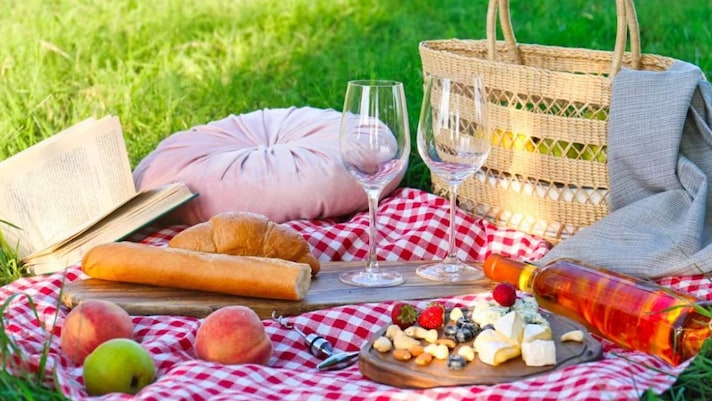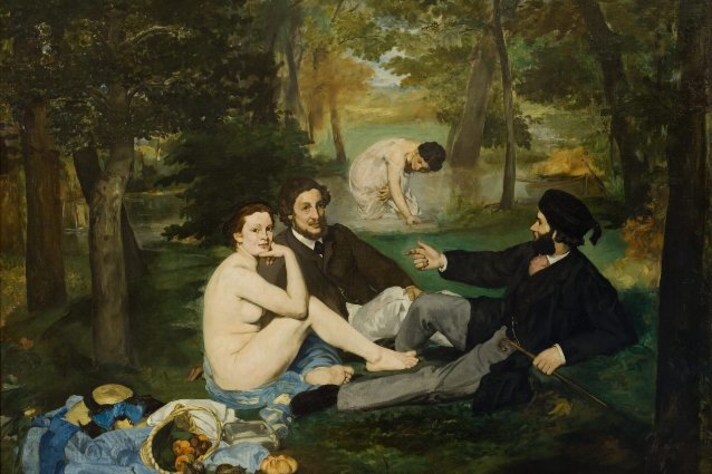Why is Picnic Called Like That? What Does It Mean? It Might Be Manet’s Fault!
Picnics are a very common custom today, a way to spend a carefree day in company, eating in the open air. But did you know that it is a custom born in the most noble courts of Europe, initially only the prerogative of the noble class? And not only that: a painting by Manet was fundamental for its diffusion.
;Resize,width=742;)
When the hottest months of the year arrive, what's better than organizing a picnic? Spending a carefree and cheerful day, in the company of family and/or friends in the midst of nature, with delicious recipes to enjoy together in the open air: it is a practice that was already talked about in Roman times and is still very widespread in the U.S. today, both organized privately and as a real "ritual" proposed by vineyards and farms. But how and when was the modern – and, let's face it, also rather romantic – idea of the picnic born? It all dates back to the noble European courts of the seventeenth and eighteenth centuries, but its consecration took place during the nineteenth century thanks (also) to a famous painting by the French painter Édouard Manet. Let's discover together the fascinating history of the picnic, a tradition that has come down to the present day and is still much loved.
Why is The Picnic Called Like That?
France played a fundamental role in the birth and spread of the picnic as a social practice and in fact the name we still use today is an anglicization of a term of French origin. The word “picnic” is English but can also be written with a hyphen, or pic-nic, because it in turn derives from the French term pique-nique: it is a word composed of two distinct words, the abbreviation of piquer, or "to take", "to steal", "to nibble", and nique, an archaic word that indicates something small and modest. The term became widespread starting from the 17th century and, initially, referred to frugal moments "stolen" from home life or in the kitchen. It entered the English vocabulary in 1748 and immediately indicated the open-air and convivial meal, a practice that would also become very popular in Great Britain.

The History of the Picnic: French Origins and Manet's Painting
It was during the 1600s that the term picnic began to be associated with eating in the open air: initially it referred to a chivalrous pastime, a break during hunting trips or very long journeys on horseback. How did it happen that, from this starting point, the picnic became a social custom of the nobles of the eighteenth and nineteenth centuries? The reasons, or rather the responsible parties, are two.
First of all, Queen Marie Antoinette, the famous sovereign of France in the mid-eighteenth century: she was a true supporter of "pique-nique", so passionate about these outings that she often organized them in the meadows of the boundless gardens surrounding the palace of Versailles. Inspired by her, aristocrats from all over Europe organized meals in the middle of the fields or along the rivers: it was a very elegant way to escape the boring and very long court banquets, and in fact it is no coincidence that this custom is especially adored by young aristocrats. We could define it as a transgression, but a transgression widely accepted by the social class to which they belong.

Several years later, the second protagonist of this story enters the scene, the one who will make the picnic even more popular with a painting: it is the French painter Édouard Manet and the painting in question is the "Le dejéuner sur l'herbe" preserved at the Musée d'Orsay in Paris. Painted in 1863, the "Breakfast on the Grass" portrays one of these convivial scenes , except that the painter inserts a naked woman into the scene, a choice that creates so much uproar that it makes the painting one of the most sensational artistic scandals in the entire history of art. The Parisian bourgeoisie accuses Monet of "scandalous indecency": it is not so much the nudity that makes them argue (Botticelli's Venus is older and also naked) but rather the fact that the presence of the naked young woman next to the two dressed men was not justified by any mythological, historical or literary pretext as in the case of Botticelli.
The indignation mounts and reaches the ears of Napoleon III, but all this only creates more interest in the painting, so Manet and his work suddenly become famous: the entire Capital queues for hours to enter the Salon des Refusés just to see the incriminated canvas. And, consequently, also discovers the practice of picnics which thus, after having been for decades the prerogative of nobles only, leaves the gardens of the castles and evolves, reaching the lower social classes.
The Spread of the Picnic in Great Britain
This story takes place in the mid-1800s, but in the meantime, at the beginning of 1800, the picnic also made its debut in Great Britain, another land where it would find very fertile roots, especially in the upper-middle class. It all started with a group of Francophiles from London who, in 1802, founded a real Pic-Nic Society, a sort of company created to eat, drink and put on amateur theatrical performances outdoors, whose participants drew lots to determine who would bring food.
It didn't take long for this practice to attract the attention of the English aristocracy, who quickly transformed it into a refined social occasion, a real social ritual that offered moments of socialization for the upper and middle classes, as well as a pleasant diversion from the tables laden with official lunches and dinners in villas and castles. A perfect testimony of how much picnics meant to the English of the 1800s are the novels of Jean Austen, in which the writer very often places her characters and their families in this context, offering us an accurate cross-section of what English picnics were like at the time.

A few years later, in 1861, the English writer and journalist Isabella Beeton transformed the picnic from a pastime of the wealthy classes to a popular and common tradition. She did so by publishing Mrs Beeton's Book of Household Management, a famous manual on how to manage a house in Victorian Britain in which the writer also included appropriate menus for picnics of up to 40 guests, which included biscuits, various pieces of meat, pigeon pies, lobsters, salads and cucumbers.
The British movement and the French movement consecrated the practice of the picnic over the years, so much so that it is still a collective ritual that has to do with the desire to immerse oneself in nature, but also with the romanticization of the event. And if today the picnic is no longer held with elegant clothes and servants as in the noble courts, you can give it a romantic touch by organizing it perfectly according to the rules of etiquette and using one of the splendid wicker baskets that have come back into fashion, designed specifically for a nineteenth-century style picnic.
;Resize,width=767;)
;Resize,width=712;)
;Resize,width=712;)
;Resize,width=712;)
